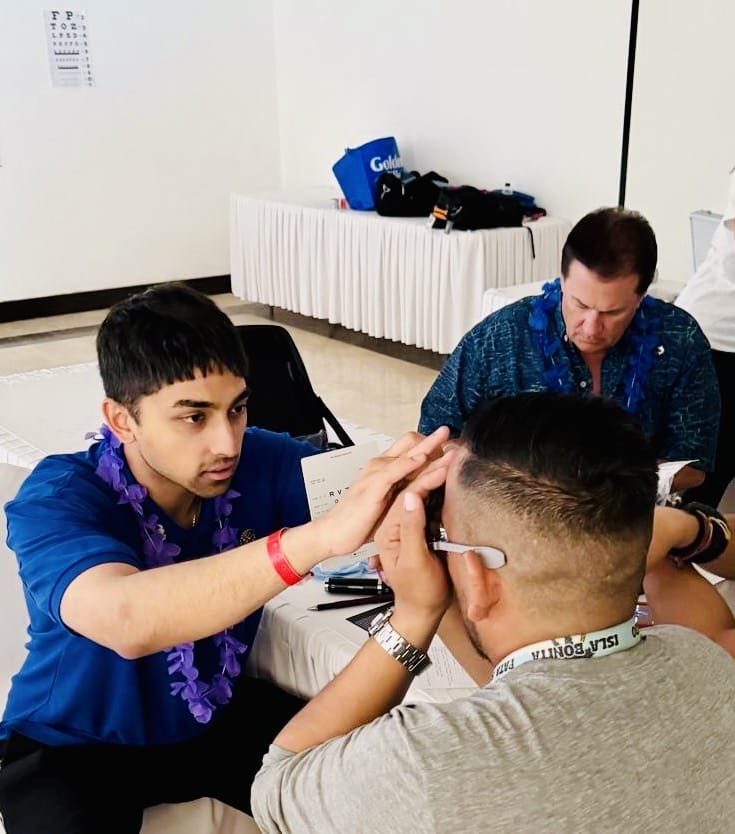WesternU research team tackles digital eye strain

Many students are taking online classes and employees are working from home due to the COVID-19 pandemic, increasing their reliance on and usage of digital screens. A research team at Western University of Health Sciences is calling on expanded clinical care to treat the consequences of digital device use. The physiological effects of excessive use of digital devices and strain from it extends beyond the eye and its adnexa.
In an article published in the September 2020 issue of Optometric Management, “Tackle Digital Eye Strain,” WesternU College of Optometry Professor Pinakin Davey, OD, PhD, FAAO, and Graduate College of Biomedical Sciences student Drake Lem highlight the ocular and physiological effects of the widespread use of smartphones and hand-held devices and how to ameliorate the issues that arise.
“Research has barely exposed the tip of the iceberg in this field. The convenience of hand-held devices and its multifunctionality makes one glued to them for hours,” Davey said. “Numerous changes occur with our eye and body as we start using these devices and issues are multiplied as we spend hours with them.”
Numerous studies show the use of digital devices alters blink patterns, ocular surface homeostasis and, particularly, tear film instability and oxidative markers, according to the article. Specifically, blink rate, keeping the eye open, glare, gaze-maintained, font size and flickering observed during the use of digital display units leads to symptoms of dry eye disease, particularly sore eyes, burning, stinging, itch and irritation.
Close viewing distance or uncorrected refractive error are likely to cause accommodative and vergence-related stress, leading to symptoms of blurred vision, difficulty in focusing at different viewing distances and ache and strain in the head, particularly behind the eyes.
Studies show that even in healthy adolescents, two-hour use of smartphones caused a twofold increase in ocular and visual discomfort. Even one hour of tablet or smartphone use was related to a fivefold increase in visual strain and blur.
Digital screen use also causes non-ocular side effects such as head and neck pain and sleep troubles.
The article states that management for digital eye strain should start with a comprehensive eye examination. A person who has residual refractive error, accommodative or vergence dysfunction or who is predisposed to ocular surface disease (for example, a patient using antihistamines) is likely to have exaggerated issues with the use of digital devices and will need care.
The article also recommends these actions: educate on acuity reserve; discuss correct working distance; educate on lighting levels; discuss blue-blocking lenses; and educate on ocular nutritional supplements.



